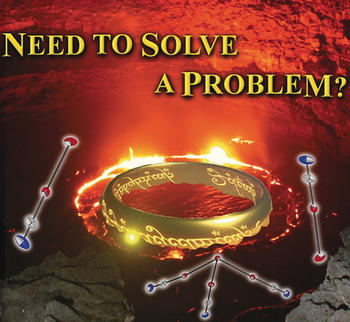From Polyhalides to Polypseudohalides: Chemistry Based on Cyanogen Bromide
Benjamin Schmidt, Benjamin Schröder, Karsten Sonnenberg, Simon Steinhauer, Sebastian Riedel – 2019
Pseudohalogens are defined as molecular entities that resemble the halogens in their chemistry. While our understanding of polyhalogen chemistry has increased over the last years, research on polypseudohalogen compounds is lacking. The pseudohalogen BrCN possesses a highly pronounced σ‐hole at the bromine side of the molecule, inducing strong halogen bonding. This allows the synthesis and characterization of new polypseudohalogen anions, as shown by the single‐crystal X‐ray diffraction of [PNP][Br(BrCN)] and [PNP][Br(BrCN)₃]. Both the nearly linear anion [Br(BrCN)]⁻ and the distorted pyramidal anion [Br(BrCN)₃]⁻ were characterized by Raman spectroscopy and quantum‐chemical calculations. The behavior of the polypseudohalogen compounds in solution and as room‐temperature ionic liquids (RT‐ILs) using the [NBu4]⁺ cation was studied by ¹³C and ¹⁵N NMR spectroscopy. These types of ILs are capable of dissolving elemental gold and offer themselves as promising compounds in metal recycling.

